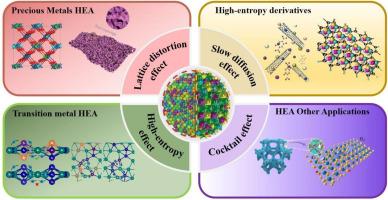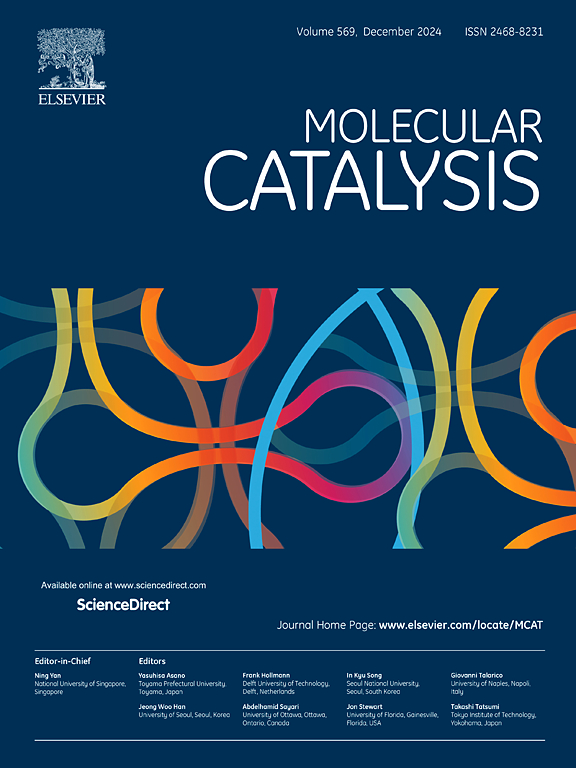高熵合金在氧进化反应中的特性和应用综述
IF 3.9
2区 化学
Q2 CHEMISTRY, PHYSICAL
引用次数: 0
摘要
高熵合金(HEAs)由五个或更多原子成分组成,形成具有高度无序晶体结构的均匀固溶体。这种独特的结构可以增加表面活性位点的数量和多样性,有利于提高催化反应的速率和选择性。此外,它还具有良好的催化活性、稳定性和抗氧化性。本文详细讨论了氧进化反应(OER)用 HEAs 催化剂的制备方法、结构特征以及在催化中的应用。不同的方法可以控制合金的成分和微观结构,从而影响催化性能。通过对 HEAs 的密度泛函理论(DFT)研究,证明其吉布斯自由能降低,进一步证实了 HEAs 对 OER 性能的影响。本文总结了制备 HEAs 及其衍生物的各种技术以及不同元素的加入。这些不同的方法和引入物可以合成具有不同电催化性能的催化剂结构。HEAs 催化剂可利用废金属或回收材料,并采用绿色合成方法,在可持续发展和环境保护方面具有广阔前景,可促进催化技术的可持续发展和应用。本文章由计算机程序翻译,如有差异,请以英文原文为准。

A review of properties and applications of utilization of high entropy alloys in oxygen evolution reactions
High entropy alloys (HEAs) are composed of five or more atomic components, forming a homogeneous solid solution with a highly disordered crystal structure. This unique structure can increase the number and diversity of surface active sites, which is conducive to improving the rate and selectivity of catalytic reactions. Additionally, it exhibits good catalytic activity, stability, and antioxidant properties. This paper detailedly discusses the preparation method, structural characteristics, and application in catalysis of HEAs catalysts for oxygen evolution reaction (OER). Different methods can control the composition and microstructure of the alloy, thereby affecting the catalytic performance. Through density functional theory (DFT) studies on HEAs, it is demonstrated that Gibbs free energy is reduced, further confirming the effect of HEAs on OER performance. The various techniques for preparing HEAs and their derivatives, as well as the incorporation of different elements, are summarized. These different methods and introductions can synthesize diverse catalyst structures with evaluated electrocatalytic performances. HEAs catalysts can utilize waste metals or recycled materials along with green synthesis methods, making them promising in terms of sustainability and environmental protection to promote sustainable development and application of catalytic technology.
求助全文
通过发布文献求助,成功后即可免费获取论文全文。
去求助
来源期刊

Molecular Catalysis
Chemical Engineering-Process Chemistry and Technology
CiteScore
6.90
自引率
10.90%
发文量
700
审稿时长
40 days
期刊介绍:
Molecular Catalysis publishes full papers that are original, rigorous, and scholarly contributions examining the molecular and atomic aspects of catalytic activation and reaction mechanisms. The fields covered are:
Heterogeneous catalysis including immobilized molecular catalysts
Homogeneous catalysis including organocatalysis, organometallic catalysis and biocatalysis
Photo- and electrochemistry
Theoretical aspects of catalysis analyzed by computational methods
 求助内容:
求助内容: 应助结果提醒方式:
应助结果提醒方式:


